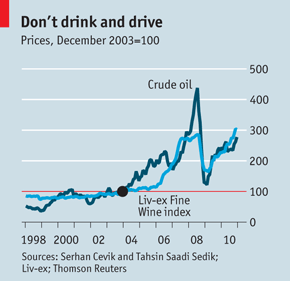Reposted from 2009, but still valuable information:
Andrew Bolt wonders why the Australian government — which has banned the sale of old-fashioned incandescent light bulbs — is not being more pro-active about handling and disposing of the replacement compact fluorescents:
Tens of thousands of Australians will next month be forced to buy these new greenhouse-friendly CFLs without the Government warning them that, unlike normal light bulbs, they contain mercury and are dangerous when broken. What’s more, they shouldn’t just be thrown out with the rubbish.
How many consumers know this?
How many of them have looked up the Environment Department’s website to find what its bureaucrats falsely describe as the “simple and straightforward” precautions to take against poisoning should one of these lamps smash:
– Open nearby windows and doors to allow the room to ventilate for 15 minutes before cleaning up the broken lamp. Do not leave on any air conditioning or heating equipment which could recirculate mercury vapours back into the room.
– Do not use a vacuum cleaner or broom on hard surfaces because this can spread the contents of the lamp and contaminate the cleaner. Instead scoop up broken material (e.g. using stiff paper or cardboard), if possible into a glass container which can be sealed with a metal lid.
– Use disposable rubber gloves rather than bare hands.
– Use a disposable brush to carefully sweep up the pieces.
– Use sticky tape and/or a damp cloth to wipe up any remaining glass fragments and/or powders.
– On carpets or fabrics, carefully remove as much glass and/or powdered material using a scoop and sticky tape; if vacuuming of the surface is needed to remove residual material, ensure that the vacuum bag is discarded or the canister is wiped thoroughly clean.
– Dispose of cleanup equipment (i.e. gloves, brush, damp paper) and sealed containers containing pieces of the broken lamp in your outside rubbish bin – never in your recycling bin.
– While not all of the recommended cleanup and disposal equipment described above may be available (particularly a suitably sealed glass container), it is important to emphasise that the transfer of the broken CFL and clean-up materials to an outside rubbish bin (preferably sealed) as soon as possible is the most effective way of reducing potential contamination of the indoor environment.
“Simple and straightforward”? Peter Garrett’s department not only deceives you about global warming, but about the ease of this useful “fix”.
It doesn’t take a lot of imagination to foresee a lot of lawsuits down the road, as the majority of folks who need to change lightbulbs won’t have read these instructions, and will try to handle them the same as the ordinary light bulbs they’ve used forever.
A more recent (May 2010) source indicates:
. . . each fluorescent light bulb contains about 5 milligrams of mercury. Though the amount is tiny, 5 milligrams of mercury is enough to contaminate 6,000 gallons of drinking water, according to the Environmental Protection Agency (EPA).
Low level mercury exposure (under 5 milligrams) can cause tremors, mood shifts, sleeplessness, muscle fatigue, and headaches. High level or extended length exposure can lead to learning disabilities, altered personality, deafness, loss of memory, chromosomal damage, and nerve, brain, and kidney damage, as stated by the EPA. There is a particular risk to the nervous systems of unborn babies and young children.

 The N-Mark standard defines an embedded tag, which can communicate and provide encrypted authentication using power induced by the reader – such a tag can therefore be embedded in a credit card or key fob without needing its own power supply.
The N-Mark standard defines an embedded tag, which can communicate and provide encrypted authentication using power induced by the reader – such a tag can therefore be embedded in a credit card or key fob without needing its own power supply. Wine experts usually explain price movements by supply-side factors such as the effects of the weather and age, but research by Serhan Cevik and Tahsin Saadi Sedik, economists at the IMF, finds that supply has only a small impact on prices. Instead, fast economic growth in emerging economies has been much more important in recent years — as is the case for oil and other commodity prices.
Wine experts usually explain price movements by supply-side factors such as the effects of the weather and age, but research by Serhan Cevik and Tahsin Saadi Sedik, economists at the IMF, finds that supply has only a small impact on prices. Instead, fast economic growth in emerging economies has been much more important in recent years — as is the case for oil and other commodity prices.

